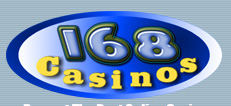Craps - Etiquette - Rules related to casino security
Rules related to casino security
- Players are not supposed to handle the dice with more than one hand (such as passing them from hand to hand before rolling) nor take the dice past the edge of the table. The only way to change hands when throwing dice, if permitted at all, is to set the dice on the table, let go, then take them with the other hand.
- When throwing the dice, the player is expected to hit the farthest wall at the opposite end of the table. Some casinos refer to throws that do not hit the opposite wall as "Mellenberg Rolls." The dice may not be slid across the table and must be tossed. Typically, players are asked not to throw the dice higher than the eye level of the dealers.
- The dice cannot land in the boxman's bank or on any of the dealers' working stacks of money.
- When either of the dice land on chips or markers not in the boxman's bank or the dealers' working stacks, the number that would be on top if the object the die is leaning on were removed, is the number that is used to make the call.
- If one or both dice hits a player or dealer and rolls back onto the table, the roll counts as long as the person being hit did not interfere with either of the dice, though some casinos will rule "no roll" for this situation.
- In most cases the shooter may "set" the dice to a particular configuration, but if they do, they are often asked to be quick about it so as not to delay the game. Some casinos have "no setting" rules.
- Do not try to place money in the dealer's hand or expect the dealers to hand you chips. Dealers are not allowed to touch the players. A player is expected to lay the cash down on the layout, which the dealer will take and then place chips in front of the player.
- Many craps table layouts state "NO CALL BETS". This means a player is not allowed to call out a bet without having at least the right amount of chips on the table. If the chips exceed the bet, for example a $100 chip is placed and bets called out of "$25 on five and nine", the dealer will say "it's a bet" and return $50 change to the player. The dealer doesn't have to actually place the bet in the proper place on the table to constitute a valid bet. This method is consistent with the fast action of the game, allowing a player to make a last-second bet while the dice are about to be thrown. The NO CALL BET rule may exist to prevent confusion on the amount bet, possibly going back to the days of 25 cent tables. For example "three fifty" could mean $3.50 or $350. If the dealer is not clear about the intention of the player he may state "no bet" and push the chips back to the player.
From Wikipedia's
Contents - Craps |
